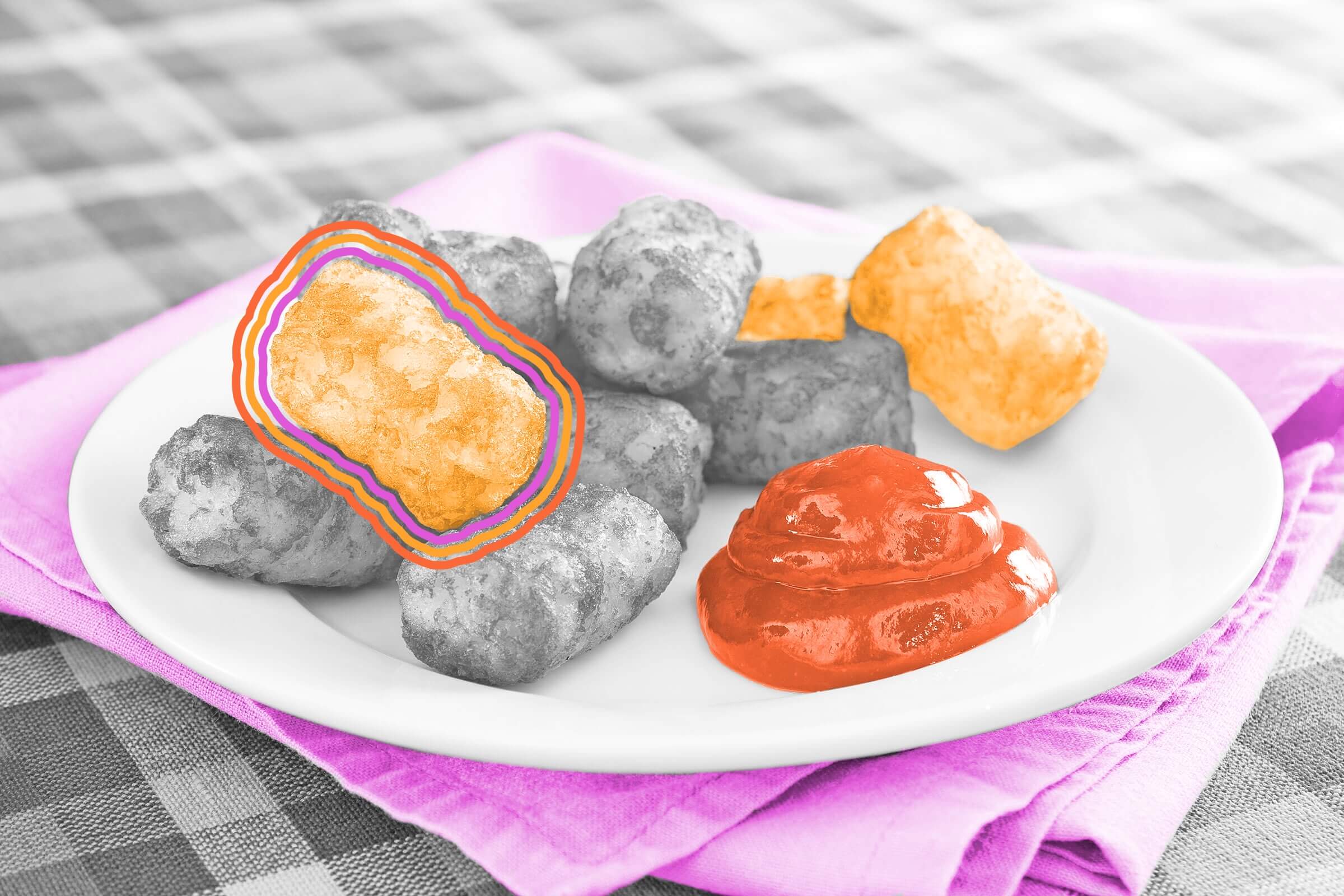| If Tater Tots are your favorite fast-food side, you have the ingenuity of two brothers — Golden and Francis Nephi Grigg — to thank. However, when the pair invented the crispy potato composites in the 1950s, they didn't set out to change snack food history. Instead, their potato creation came from a quest to reduce the amount of food waste produced at their frozen foods plant. Before becoming successful spud salesmen, Golden and Francis sold frozen corn. Around 1949, they decided to diversify into other fruits and vegetables, and converted a factory in Ontario, Oregon (on the border with Idaho), into a potato-processing plant they were later able to purchase. In 1952, the Griggs launched the Ore-Ida brand, which became popular for its frozen french fries. The crispy potato spears were a hit among home cooks at a time when prepared meals and frozen foods were becoming more widely available thanks to postwar technology. The downside to booming french fry sales, however, was the waste left behind. Initially, the Griggs sold vegetable byproducts to farmers as livestock feed, but they soon looked for a way to nourish humans instead. They began experimenting with chopping up the potato scraps, mixing them with flour and spices, then shaping the result into a rectangle with the help of a simple, homemade plywood mold. The first Tater Tots — named, by one account, after an employee won a contest by suggesting "tater" for potato and "tot" for small — debuted in 1956. At first, shoppers seemed skeptical of the inexpensive scrap-based snack, but after prices were raised slightly to suggest an air of sophistication, Tater Tots quickly found a permanent home in frozen food aisles, where they continue to reign today. | 






No comments:
Post a Comment